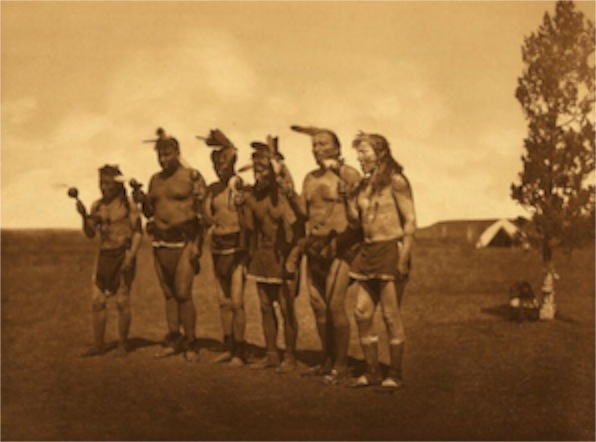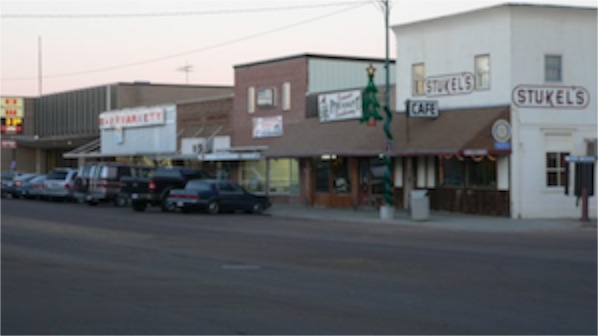In Gregory
03/12/12 04:39

A century after Lewis and Clark, the territory had changed dramatically. There were now two new states, North Dakota and South Dakota, admitted to the union on the same day. The Dakota, Nakota and Lakota people had been given the popular name “Sioux,” derived from a mispronunciation of the name they were called by other tribes. They had also been forced onto he Rosebud, Pine Ridge, Cheyenne, Standing Rock and Lower Brule reservations.
As the 20th century dawned, an ambitious congressman persuaded President Theodore Roosevelt to open remaining lands within the Dakotas for settlement. On May 15, 1904, the land that is now Gregory County was opened for settlement. Gregory county is on the west side of the Missouri River where the river enters South Dakota. The southern line of the county is the border of South Dakota and Nebraska. The eastern boundary is the Missouri River. By July of 1904, 2600 160-acre tracts had been designated for settlement.
The subsequent boom created several communities. The government town site – the place for the registration of homestead claims and publication of proof of claim – was Gregory. Within one year, the town grew from four surveyor’s stakes to a bustling town with over 250 buildings. There were two banks, two hardware stores, a meat market, two lumber companies, three hotels, a restaurant, two newspapers, a drug store, three blacksmith shops, a pool hall and even a furniture store. The town was, as they say, bursting at the seams.
The boom didn’t last long. The city continued to grow for a few years as land claims were proven up and then sold. The price of land rose steadily in the early years. By 1906, land was selling for as much as $3,500 per quarter – a sevenfold return on investment for those who had bought in or settled in just a couple of years earlier. By 1907, the city of Gregory had a public water works and was installing electric lights. An opera house was under construction. By 1908, when Tripp County was opened for settlement, there were 15 passenger trains a day that stopped in Gregory. The population of the county and of the city peaked sometime within the first decade of its life.
Life was different then. The way to travel quickly throughout the region was by train. There were no reliable automobiles yet and the state had yet to develop a modern highway system. People who lived in the county were generally limited in their travel to distances that could be covered by horseback in a day. They came to town for all of their services and did most of their business in the same county where they lived.
For the first 75 years of its existence, Union Congregational Church of Gregory was able to find well-qualified ministers who were among the most educated of the city’s citizens. The church was able to compete with other congregations of the plains to offer pay, housing and other amenities that were attractive to ministers. Nearby Yankton College provided a steady supply of young, educated leaders for the area’s churches.
By the mid-1990’s however, the community of Gregory had declined in population and the church was smaller as well. Young people who grew up in town tended to move away and seek employment in more urban centers. Area farms and ranches began to consolidate as it became possible to farm larger and larger areas with less labor. A modern highway system made it easy to travel to other cities to obtain goods and services. Bridges were built over the Missouri River diminishing the distinction between east river and west river communities. The community and the church both showed signs of decline.
Yesterday, we drove to Gregory in about four hours. Most of our travel was at 75mph on a modern interstate. The drive was pleasant even though the short days of winter meant that it was dark and we couldn’t enjoy much of the scenery. After we turned off of the Interstate, the cloud cover made everything dark and we couldn’t see the beautiful scenery as we drove along the Missouri bluffs. The frequent twists and turns of the highway were the only signals of the interesting country through which we drove.

As we begin a new day, it is interesting to think of the story of this place and to imagine its future. It is difficult to imagine a scenario that will result in another population boom for Gregory County. This land seems to do best with a lower population. A sense of isolation is part of the charm of the territory. Many people will congregate in the cities on the other side of the river. At least that’s the way I hope it turns out. I like the open space and empty country. It’s worth the drive to attend the funeral of a friend or just to get together with others.